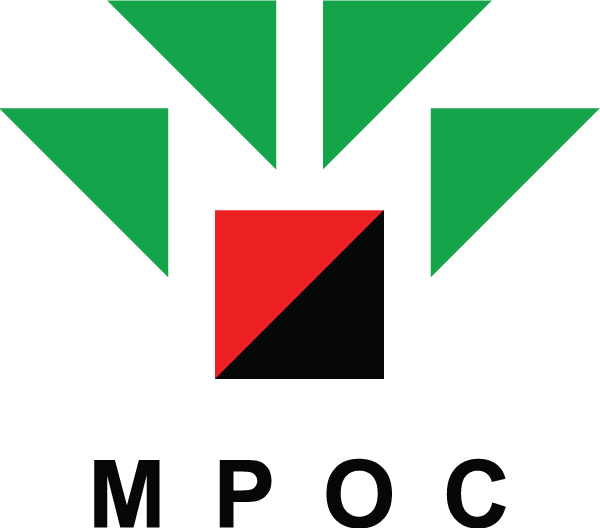Archive
2022
28 Mar - 01 Apr 2022
ASSESSING 2022: MANAGING OPPORTUNITIES AND RISKS
14 - 18 Nov 2022
MITIGATING THE NEXT WAVE OF MARKET UNCERTAINTIES
2021
05 - 11 Apr 2021
Section 1: Price Direction
•
05 - 11 Apr 2021
Section 2 : Special Focus on the US
18 - 24 Oct 2021
Section 1: Oils & Fats Supply, Demand and Outlook
18 - 24 Oct 2021
Section 2: Opportunities for Palm Oil in Asian Market
2020
24 Feb - 01 Mar 2020
Section 1 : CPO Price Trend
24 Feb - 01 Mar 2020
Section 2: Global Palm Oil Market Opportunities
22 - 28 Jun 2020
POINTERS ON THE PRICE TRENDS
2019
18 - 24 Feb 2019
Section 1: CPO Price Trend
25 - 24 Feb 2019
Special Focus - India
19 - 25 Aug 2019
Section 1 : CPO Price Trend
19 - 25 Aug 2019
Section 2: Special Focus
2018
29 Jan - 04 Feb 2018
Section 1: CPO Price Trend
29 Jan - 04 Feb 2018
Section 2 : Global Palm Oil Market Focus
06 - 12 Aug 2018
Section 1: CPO Price Trend
06 - 12 Aug 2018
Section 2: Global Palm Oil Market Focus
2017
20 - 26 Feb 2017
Section 1: Price Directions
20 - 26 Feb 2017
Section 2: Market Challenges and Opportunities
21 - 27 Aug 2017
Section 1: Palm Oil Price Fundamentals
21 - 27 Aug 2017
Section 2: Regional Focus : CIS Countries
2016
22 - 29 Feb 2016
2016 Market Direction - Twists and Turns of Palm Oil Prices
22 - 28 Aug 2016
Section 1 : Palm Oil Price Fundamentals
22 - 28 Aug 2016
Section 2 : Trade Issues and Market Prospects
2015
23 Feb - 01 Mar 2015
Opportunities, Challenges And Trend In 2015 CPO Price
•
EU Biodiesel Market: Past, Present & Future
17 - 23 Aug 2015
Second Half 2015 - Anticipating Market Price Direction
17 - 23 Aug 2015
Special Focus: Indian Sub-Continent
2014
17 - 24 Feb 2014
Anticipating 2014 Palm Oil Price Direction
25 - 31 Aug 2014
2nd Half 2014: Market Challenges, Predictions And Directions
2013
18 - 27 Feb 2013
Mapping The Palm Oil Price - 2013 Market Perspective
22 - 29 Jul 2013
Prospects For Second Half Of 2013 - Managing Price Fluctuations
2012
13 - 20 Feb 2012
2012 Price Direction, Issues & Challenges
•
06 - 17 Aug 2012
Palm Oil : Challenges, Opportunities And Latest Market Directions
2011
07 - 17 Feb 2011
Challenges, Opportunities And Price Direction
08 - 16 Aug 2011
Challenges, Opportunities And Latest Price Trend
2010
02 - 08 Aug 2010
2010 Year End Prospects - What Lies Ahead?
Login
Error
Reset Password

Error
Register

Error

POINTERS
LOGIN /
REGISTER




ORGANIZED BY:

Opportunities, Challenges And Trend In 2015 CPO Price:
EU Biodiesel Market: Past, Present & Future
Biodiesel is the most important biofuel in the EU, representing about 70% of the total transport biofuels market. The first biofuel was developed and used in the transport sector in the 1990s. EU biofuels goals set out in directive 2003/30/EC (indicative goals) and in the RED 2009/28/EC (mandatory goals) further pushed the use of biodiesel.
The EU is the world’s leading biodiesel producer with output increasing from 10.18 MMT in 2013 to an estimated 10.35 MMT in 2014; spearheaded by Germany and France, who in total produced an estimated 4.75 MMT in 2014 or 46% of total biodiesel production in the region.
However, market growth for biodiesel has slowed considerably since 2009 as EU policy moves away from supporting biofuels produced from food feedstocks such as rapeseed oil. Domestic biodiesel production peaked in 2010 but has since declined (2011-2013) because of the influx of cheaper biodiesel imports from Argentina and Indonesia.
There are a few other factors that are driving the EU biodiesel sector apart from the current RED mandates. One of them includes the choices of feedstocks. Rapeseed oil is still the dominant feedstock but its share of EU biodiesel production diminished from 63% in 2008 to 55% in 2013. Palm oil has gained its market share since 2009 due to its price competitiveness. Used cooking oil’s market share has also soared as a result of the double-counting measure.
This paper also reviews the challenges that are faced by palm oil, future outlook and strategic recommendations to boost Malaysian palm oil exports in the EU biodiesel sector.
The EU is the world’s leading biodiesel producer with output increasing from 10.18 MMT in 2013 to an estimated 10.35 MMT in 2014; spearheaded by Germany and France, who in total produced an estimated 4.75 MMT in 2014 or 46% of total biodiesel production in the region.
However, market growth for biodiesel has slowed considerably since 2009 as EU policy moves away from supporting biofuels produced from food feedstocks such as rapeseed oil. Domestic biodiesel production peaked in 2010 but has since declined (2011-2013) because of the influx of cheaper biodiesel imports from Argentina and Indonesia.
There are a few other factors that are driving the EU biodiesel sector apart from the current RED mandates. One of them includes the choices of feedstocks. Rapeseed oil is still the dominant feedstock but its share of EU biodiesel production diminished from 63% in 2008 to 55% in 2013. Palm oil has gained its market share since 2009 due to its price competitiveness. Used cooking oil’s market share has also soared as a result of the double-counting measure.
This paper also reviews the challenges that are faced by palm oil, future outlook and strategic recommendations to boost Malaysian palm oil exports in the EU biodiesel sector.
REGISTER OR LOGIN TO VIEW FULL REPORT
REGISTER OR LOGIN TO VIEW PRESENTATION SLIDES
Questions & Answers
Please login to post comments.
Facebook SDK returned an error: